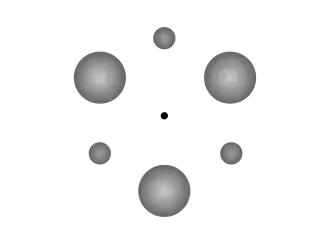To answer, I split this question into multiple parts (each of which may have subparts):
- How many Goldilocks zones can there be in a multi-star system?
- How many orbits can be in a single star's Goldilocks zone?
- How many planets can be in a single orbit?
For 1, take a look at this question. While it does not address the important question directly, what I read in the answers is that there is only one Goldilocks zone - either one of the stars is faint and distant and the planets orbit the other, or else the stars orbit each other closely and the planets orbit their shared center.
For 2, the conservative zone is about 0.5 AU, centered on Earth's orbit, for Sun-like stars. Stars that are somewhat smaller than the Sun have smaller Goldilocks zones (but live longer so life has more time to evolve); stars slightly large and brighter than the Sun (but burn out faster giving less time for life to evolve). Stars with types other than F, G, and K are unlikely to support life.
Because the habitable zone moves during the star's lifecycle (Venus used to be when the Sun was cooler, and Mars will be eventually as the sun gets hotter), I find it somewhat unlikely that more than two orbits could fall into the zone for much of a star's life. However, since both Venus and Mars are almost in the zone and we don't really know how much they are hurt by not having a massive moon (which is necessary for tectonics and a magnetic field), I'll say 3 orbits.
For 3, you can consider rocky planets or the moons of gas giants. There are stable solutions that involve two planets sharing the same orbit. You might be able to replace each of those planets with a pair of planets orbiting their common center of mass while that center orbits the Sun. This way gives you a total of 1*3*2*2=12. Though I'm not sure if all the doubling is really safe so 6 would be a much safer number.
Although gas giants have many moons, they are unlikely to have more than 4 with significant mass, and the presence of gas giants in the inner system invalidates the doubling cheats we used in the rocky case. So just 1*3*4=12. Note that with gas giants you do have a larger goldilocks zone, but this is cancelled out by the fact that gas giant orbits must be farther apart.
TL;DR: 4 is reasonable, 6 is plausible, 12 is possible.
